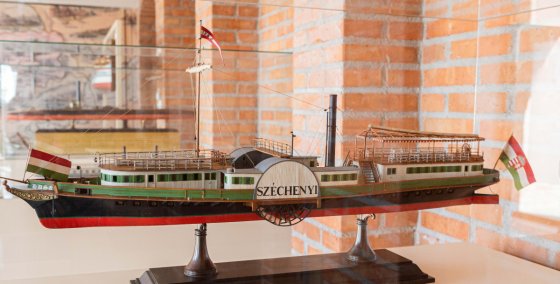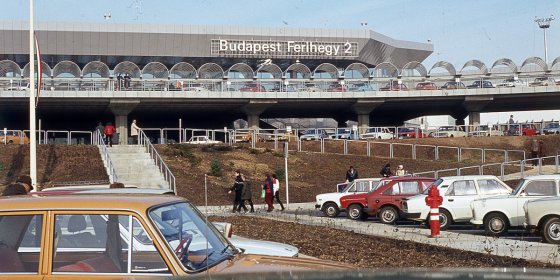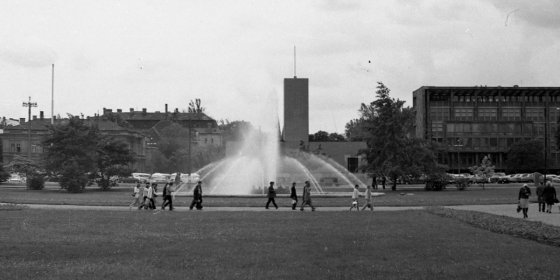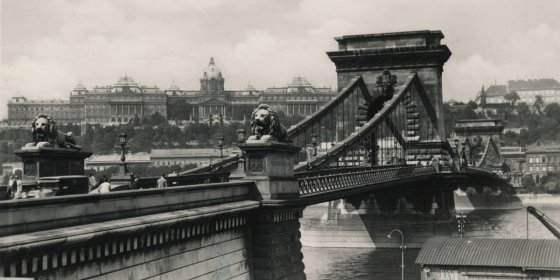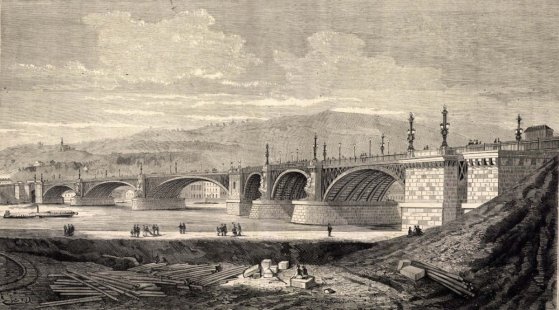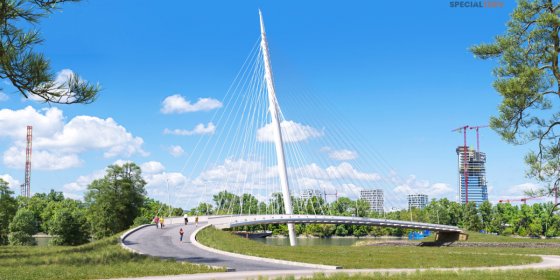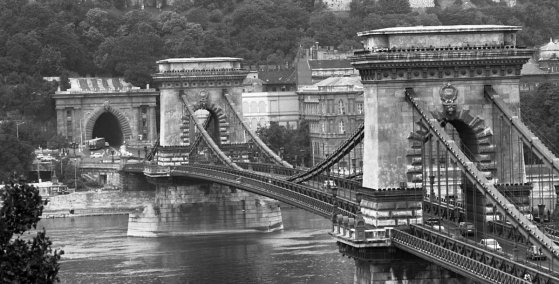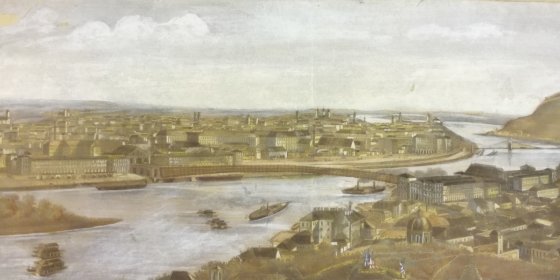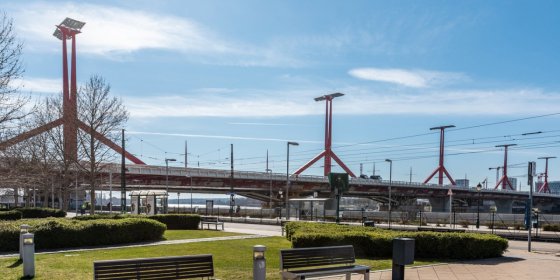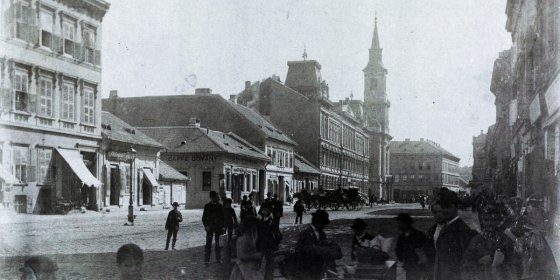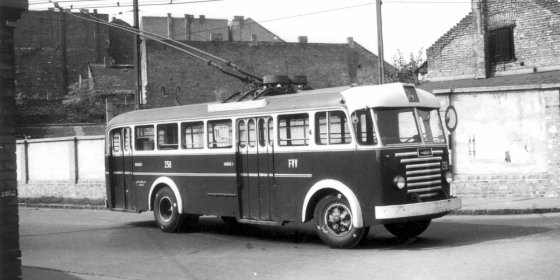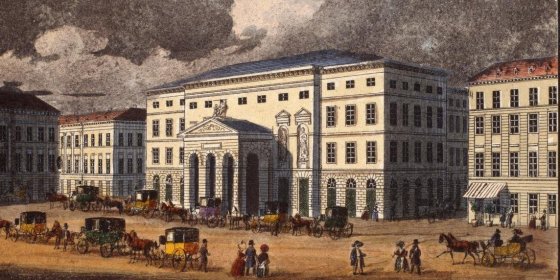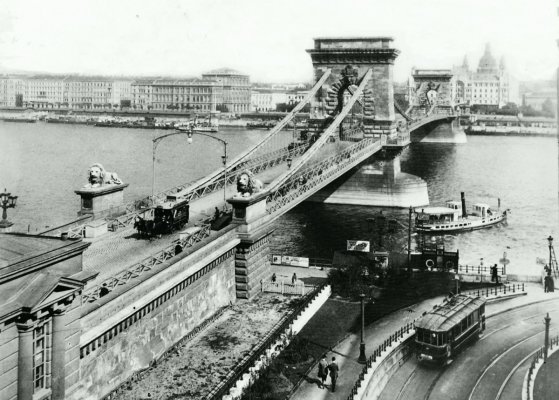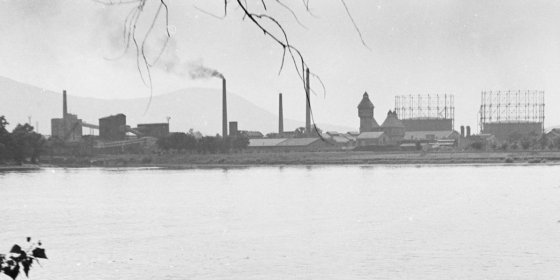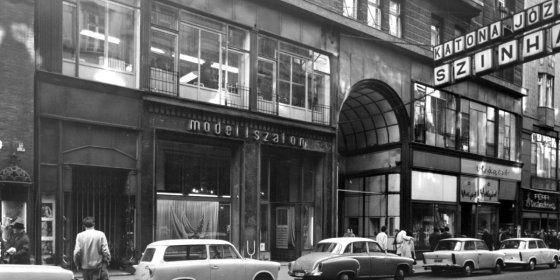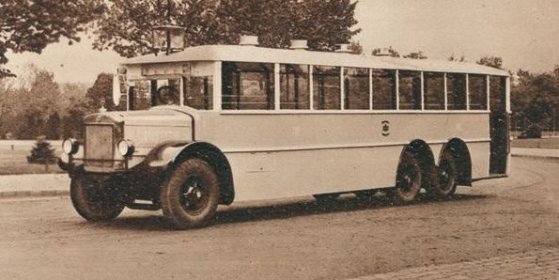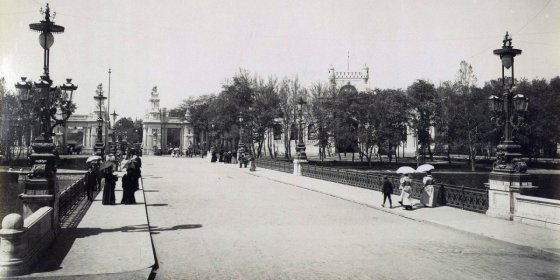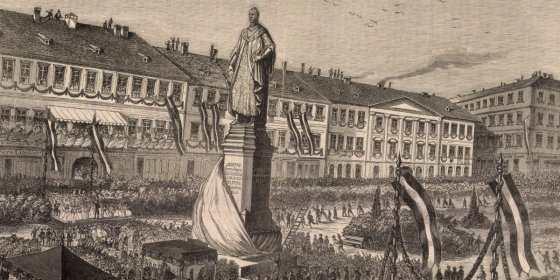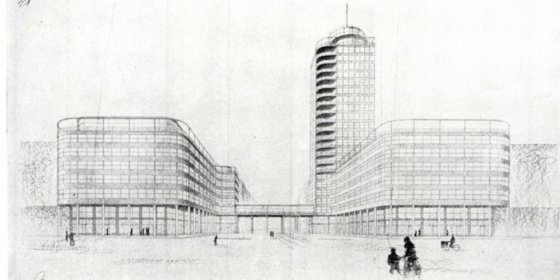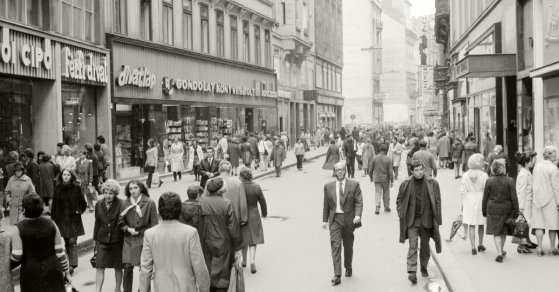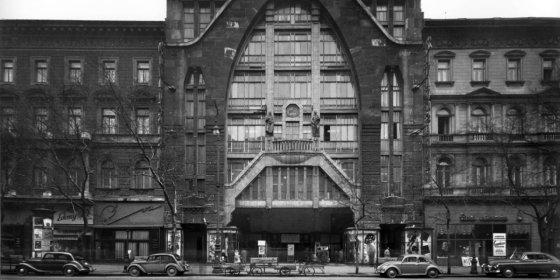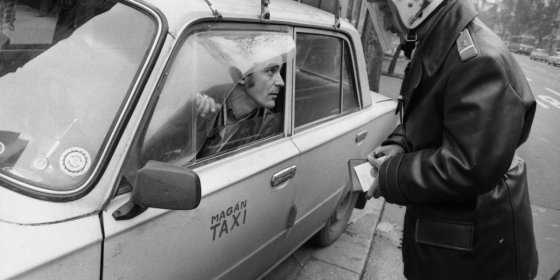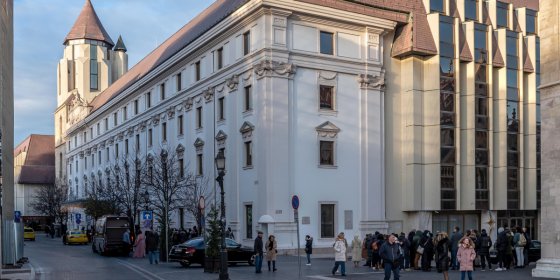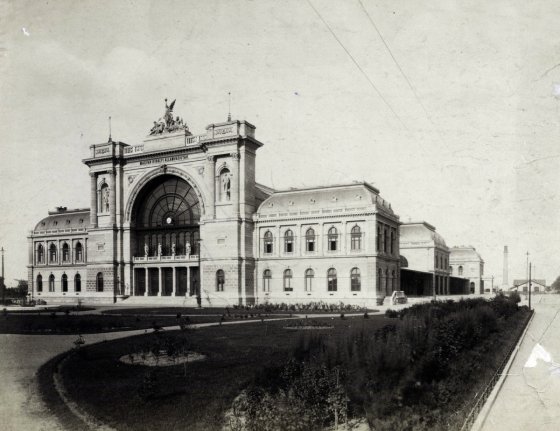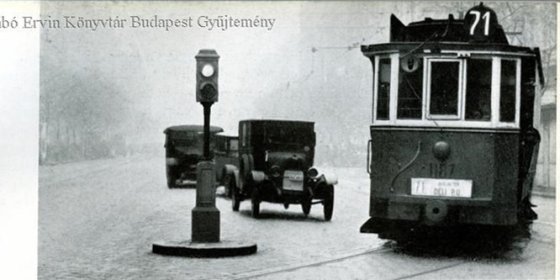 The „intertwined history” of the bridges and the city of Budapest
Which ideas and events have shaped the fate of bridges of Budapest and the cityscape? Alongside many other interesting facts, this question is also answered this newly published book by the Budapest City Archives, which introduces the history of bridges in Budapest.
The „intertwined history” of the bridges and the city of Budapest
Which ideas and events have shaped the fate of bridges of Budapest and the cityscape? Alongside many other interesting facts, this question is also answered this newly published book by the Budapest City Archives, which introduces the history of bridges in Budapest.
Csaba Domonkos
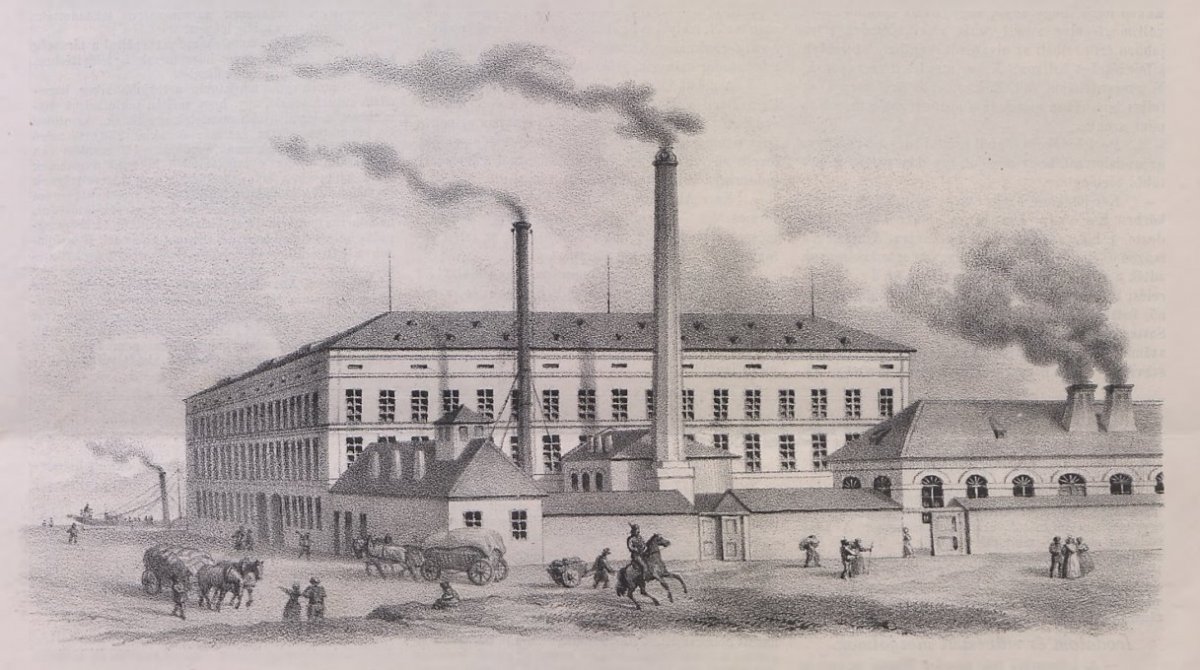 One of the first Hungarian machine factories operated in Lipótváros
One of the first Hungarian machine factories operated in Lipótváros
April 21, 2022 at 9:30 AM
One of the first machine factories in Pest practically operated as a subsidiary of the József Rolling Mill, and for economic reasons it became an independent factory, which then became one of the first machine factories in Hungarian industry 175 years ago. Unfortunately, it was not long-lived, but its impact was significant.
From Pest to Constantinople - Exhibition on navigation on the Danube
April 20, 2022 at 2:00 PM
An exhibition can be seen in Gül Baba's tomb, which commemorates one of the largest enterprises of the 19th century, the opening of the Danube to the east. Among the objects we can see the model of the boat, Julietta, the original of which was used by István Széchenyi and his companions when they crossed the Danube in 1830 on a houseboat, Desdemona, which was built for this purpose, assessing the difficulties before sailing.
Budapest's air gate - This is how Ferihegy Airport expanded 25 years ago
April 14, 2022 at 9:00 AM
The air gate of Budapest is Liszt Ferenc International Airport. In common parlance, the history of the airport, also called Ferihegy Airport after its old name, is very adventurous, as it was planned before the war, but only handed over afterwards. There have been several significant changes in the life of the airport since then, such as the construction of Terminal 2B, which had just begun 25 years ago.
Fifty years ago: severe water shortages in Budapest
March 30, 2022 at 9:00 AM
As in the current drought, Hungary and Budapest was hit by a significant water shortage fifty years ago, exacerbated by an outdated water supply network and regular pipe ruptures. The situation was so critical in 1971–1972 that the water consumption of industrial plants was restricted and the population felt water shortages, as in many places there was no water flowing from the taps, so for a while the water supply had to be secured by water carts.
The first Danube bridges in Budapest were designed by foreigners - English and French engineers were commissioned
March 25, 2022 at 9:00 AM
Although the construction of bridges has a long tradition in Budapest, in the XIX. century there was not enough expertise and technology at home for this job for a long time. Foreign engineers also originally built the Chain Bridge, the Margit Bridge and the Railway Bridge. The first completely Hungarian Danube crossing was the Ferenc József Bridge, which was built in 1896 for the celebration of the millennium of Hungary.
It was decided 245 years ago that the oldest university in Hungary was moving to Buda
March 16, 2022 at 9:00 AM
The oldest, still operating university in Hungary, the legal predecessor of today's Eötvös Loránd University, Semmelweis University and Pázmány Péter Catholic University, began operating in Nagyszombat [today Trnava] in 1635. Maria Theresa decided to move it, and although it was suggested that it should be placed in the Invalidus Palace in Pest, in the building of today's Central Town Hall, it was finally moved to Buda, into the Castle, in 1777.
After the war, the coat of arms of the nobility only remained on the Buda side of the Chain Bridge
March 11, 2022 at 11:00 AM
Two coats of arms were placed on the Chain Bridge 170 years ago, three years after it opened. Family, noble symbols that referred to the two people without whom the first permanent Danube bridge connecting Pest and Buda would not have been built. They were the greatest Hungarian and a wealthy banker, István Széchenyi and György Sina, to whom the general meeting of the Chain Bridge Company wanted to give gratitude this way.
The look of the second bridge of Budapest was decided 150 years ago
March 8, 2022 at 11:00 AM
The result of the design competition for the Margit Bridge was decided on 9 March 1872, 150 years ago. The winner became Ernest Gouin’s elegant arch bridge idea. The bridge south of Margit Island was to be built with a representative purpose, hoping to raise the light of the about-to-be united Budapest, and help make it a Vienna-like capital of the country. Despite large-scale ideas, there has been a petty discussion about cutting construction costs.
The newest bridge in Budapest - An arched footbridge will connect Csepel with Pest
March 6, 2022 at 9:00 AM
The special pedestrian bridge is already under construction in Budapest, which, starting from the athletic stadium of the 9th District, will finally connect the Csepel Island peak to the city's circulation. The structure will connect the island with the Pest side with an arched road, and its recently erected pylon reaches a height of 65 metres.
The Chain Bridge was completely renovated 35 years ago, but the Kádár coat of arms was not replaced
March 4, 2022 at 9:00 AM
The Chain Bridge was last renovated in 1986–1988 before the current reconstruction, and the crossing was closed to cars on 1 March 1987. The renovation affected almost every part of the bridge, which was already in extremely poor condition at the time: the rusty chains as well as the stone surfaces and ornaments of the gates and the structure of the roadway. Although the Hungarian coat of arms with a crown-laurel wreath was already adorned on the candelabras, the idea of exchanging the coats of arms of Kádár on the pylons had to wait for years.
The connection between Nyugati and Déli Railway Stations was also planned in the 19th century - now it is made underground
February 22, 2022 at 9:00 AM
In recent years, the idea has emerged to connect the Déli and Nyugati Railway Stations with a tunnel. The plan of the Budapest Development Centre is now one step closer to implementation, as a contract has been signed for the preparation of an environmental impact assessment of the connecting railway tunnel to be built under the Danube. The idea of connecting the Déli [Southern] and Nyugati [Western] Railway Stations, which are relatively close to each other, is not a new idea. It arose almost immediately after the opening of the Déli Railway Station in 1861, although an overground connection was still imagined at the time.
The government decided to build the Lágymányosi Bridge 30 years ago
February 20, 2022 at 9:00 AM
The government decided on today's Rákóczi Bridge, which for a long time was the youngest Danube bridge in Budapest, exactly 30 years ago, on 20 February 1992. A bridge was planned here as early as the 1960s, so the decision ended a very long, three-decade process. Construction of the bridge could then begin, which was completed in 1995, but the originally planned tram only crossed it in 2015.
Crowded homes, high mortality: the people of Pest did not have an easy life 150 years ago
February 16, 2022 at 10:00 AM
Today, we cannot imagine the misery of the people of Pest in certain parts of the city before the unification of the city. Nor was it rare, according to statistics from 150 years ago, for several families to live in a single room. Those living in a room crowded with 6 to 10 people died sooner, and the average life expectancy, even in the best parts of downtown, was less than 26 years. PestBuda's article reveals that the misery was great, especially in Ferencváros and Józsefváros, but the situation did not improve in the other districts of the capital for a long time.
Chain Bridge candelabras: oil lamps shine when handed over, now LED lighting is being installed
February 13, 2022 at 11:00 AM
We signed a contract with the Moon for the lighting of the Chain Bridge: this is how the front page of a funny paper complained in in the middle of the 19th century that the visibility on the first bridge in the capital was poor. The candelabras of the Chain Bridge, currently under renovation, will be restored to their 1914 condition, but will be equipped with energy-saving LED lights. Since the handover of the bridge in 1849, the lighting has changed several times, these are shown below.
The Ikarus 60 trolleybus was introduced seventy years ago
February 7, 2022 at 11:00 AM
In the 1950s, the Hungarian-made solo, ie non-articulated, trolleybuses, which ran until the mid-1970s, began to be produced out of need. Although Soviet technology was used, the body was the same as the Ikarus 60 bus that appeared at the time. The first Ikarus 60T, ie the trolleybus, was introduced to the general public in Budapest 70 years ago.
The German Theatre in Pest, once the largest theatre in the city, burned down 175 years ago
February 4, 2022 at 9:00 AM
The side of today's Vörösmarty Square facing the Danube has been lined with many buildings over the past 200 years, the first being the German Theatre in Pest [Pesti Német Színház], which was handed over in 1812. Although excellent Hungarian artists of the time also performed in the huge building, which could accommodate 3,500 spectators, such as Déryné and its second conductor was Ferenc Erkel himself, however, the theater could only be used for 35 years, as it burned down on 2 February 1847.
The tram started on the Várkert Embankment 115 years ago
February 1, 2022 at 9:00 AM
The tramway at the Chain Bridge bypasses the Buda end of the bridge in a tunnel, under the ground. However, when it was built, the tramway was debated for 9 years by the Budapest City Council and the Budapest Public Works Council, it was difficult for them to decide whether to run the tram on the upper or lower embankment. In the end, the dispute was concluded, so 115 years ago, in 1907, trams could start south of the Chain Bridge.
When gas no longer came from the factory - This is how Budapest switched to the new heating method
January 31, 2022 at 10:00 AM
In Budapest, it has been decided for half a century to displace air-polluting coal heating from the city centre and switch to gas. At that time, two types of gas were used in households: town gas made of coal and natural gas. Over time, however, the former has been increasingly displaced by more efficient natural gas, which has required the rebuilding of networks and the replacement of gas appliances. Fifty years ago, in 1972, the changeover received a great deal of momentum, but it was accompanied by casualties: the days of the Óbuda Gas Factory, which produced town gas, were numbered since then.
They were looking for the old Pest city walls after a pipe burst in Pest
January 28, 2022 at 9:00 AM
Pipe bursts occur. Sometimes they are just unpleasant, sometimes they cause serious damage, and rarely do they lead to interesting discoveries. This happened in the city centre, where in 1972, following a pipe burst, it was believed that a section of the old Pest city wall had come to light.
Buses appeared on the Outer Ring Road ninety years ago - the public could travel for free on the first one
January 25, 2022 at 9:00 AM
The tram has belonged to the scenery of the outer ring road for almost a quarter of a century now. Traffic on the ring road is unthinkable without it, but there was a time when trams were not enough, so from 1932, for 57 years, buses also ran on the Outer Ring Road. They started on 25 January, 1932, just 90 years ago.
Városliget Bridge and Margit Island Water Tower - Budapest owes much to Szilárd Zielinski
January 18, 2022 at 9:00 AM
The first Hungarian doctor of engineering was appointed 120 years ago, on 17 January 1902. He was Szilárd Zielinski, who, in addition to writing his doctoral dissertation on a railway system under Budapest, was one of the pioneers of reinforced concrete construction and provided the city with a number of emblematic structures. Without him, the Margit Island Water Tower, the bridge named after him over Lake Városliget, but also the Chain Bridge would be different.
Palatine Joseph, who died 175 years ago, had been systematically developing Budapest for decades before the Public Works Council
January 15, 2022 at 3:30 PM
Palatine Joseph [József nádor in Hungarian] died 175 years ago in Buda. Although the archduke born in Florence was destined for a different career, he did much for Hungary, Pest and Buda from 1795 as a governor, then from 1796 as Palatine until his death in 1847. On the anniversary of his death, we put together a bouquet of what Budapest owes to him.
Water intrusion into the metro tunnel: the builders feared that the houses on Rákóczi Road would be endangered
January 11, 2022 at 1:00 PM
Between Astoria and Blaha Lujza Square, in the metro tunnel under construction, but on the already drilled section, a water intrusion took place in 1967, which shocked the people of Budapest and raised questions about the possible safety of the metro. The unexpected sand and water intrusion 55 years ago not only caused alarm among prospective passengers, but also experts feared that the residential buildings on Rákóczi Road could be endangered. After averting the danger, the builders tried to reassure the people of the capital that there would be no need to fear similar accidents in the finished metro tunnel.
Skyscraper plans in Budapest - High-rise buildings were planned for Károly Boulevard, Astoria and Rákóczi Road
January 9, 2022 at 11:00 AM
On Pestbuda, we recently introduced the Mol Tower under construction, which will be the first real high-rise building in Budapest. It will be no real skyscraper, because we call that buildings with a height of up to 150 meters, and the Mol Tower, albeit just by a little, remains below that limit. High-rise buildings have been designed in Budapest for almost 100 years, and several architects would have surpassed the 96-meter-high height of the Parliament and St. Stephen's Basilica.
Cars were banned from the popular streets of the Downtown 45 years ago
January 5, 2022 at 11:00 AM
In Budapest, from the 1960s onwards, the narrow streets of the Downtown were completely occupied by cars and barely accessible to pedestrians. At first, cars were banned only from Váci Street, but 45 years ago, car traffic was stopped in several Downtown streets, and from then on, only pedestrians could use them.
The Fashion Hall moved to Andrássy Avenue out of necessity - The store opened in its new location sixty-five years ago
January 2, 2022 at 3:00 PM
The Magyar Divatcsarnok [Hungarian Fashion Hall] moved from Rákóczi Road to Andrássy Avenue in 1957, to the former building of the Párisi Nagy Áruház [Párisi Department Store], which was nationalized after the war and used as a book storage. In the 1956 revolution, the store of the Fashion Hall at 72 Rákóczi Road was so damaged that a new location had to be found. The building on Andrássy Avenue was available, only 10 wagons of unsold books had to be disposed of.
Forty years ago, private taxis appeared on the streets of Budapest
January 1, 2022 at 10:00 AM
In the 1980s, the private sector also played an increasingly important role in the socialist system. The change in taxiing came 40 years ago, and private taxis have been able to work in the capital since 1982. At first, the passengers were transported by Ladas, Zastavas and Dacias.
The Hilton Hotel in Budavár was handed over on New Year's Eve 45 years ago
December 31, 2021 at 7:30 PM
The Hilton Hotel, handed over 45 years ago, was built on the site of the city’s most beautiful Baroque monument, a Jesuit dormitory damaged in World War II. Only the western wall of the old building facing András Hess Square remains. Some say that the modern building has been incorporated into the castle environment, others believe that it disturbs the harmonious view of the Matthias Church and the Fisherman's Bastion with its huge block.
Who put the country on the train - Budapest owes a lot to Gábor Baross, former Minister of Transport
December 29, 2021 at 6:00 PM
Gábor Baross, who was Minister of Transport for only 6 years, was appointed 135 years ago. He was the one who put the country on the train: by establishing cheap rail travel, it made Budapest accessible to low-income country people, helping the development of the capital a lot.
Traffic lights have been with us for 95 years - The first traffic light was installed on Blaha Lujza Square
December 27, 2021 at 12:00 PM
Nowadays, we take it for granted that traffic lights are included in the cityscape. They switch automatically, or pedestrians may have to press a button to cross. The predecessor of today's traffic lights were still manually operated, and the first one appeared at the corner of the Outer Ring Road and Rákóczi Road 95 years ago.
More articles
 The „intertwined history” of the bridges and the city of Budapest
Which ideas and events have shaped the fate of bridges of Budapest and the cityscape? Alongside many other interesting facts, this question is also answered this newly published book by the Budapest City Archives, which introduces the history of bridges in Budapest.
The „intertwined history” of the bridges and the city of Budapest
Which ideas and events have shaped the fate of bridges of Budapest and the cityscape? Alongside many other interesting facts, this question is also answered this newly published book by the Budapest City Archives, which introduces the history of bridges in Budapest.
 The Bridge Report, which brought a turning point in the history of Budapest
A travel report that changed the history of Pest and Buda, as well as Hungary. The little book contributed to the change of half a thousand years of legal customs and the implementation of an investment of unprecedented size and technical quality. This book was The Bridge Report [Hídjelentés in Hungarian].
The Bridge Report, which brought a turning point in the history of Budapest
A travel report that changed the history of Pest and Buda, as well as Hungary. The little book contributed to the change of half a thousand years of legal customs and the implementation of an investment of unprecedented size and technical quality. This book was The Bridge Report [Hídjelentés in Hungarian].
 Drama on the university wall - The heroic monument was planned 95 years ago
In the constant hustle and bustle of the Egyetem Square in Pest, the students may not even notice the monument that decorates the short section of wall between the church and the central building of ELTE. However, it commemorates their predecessors, the heroes who fought for their country in World War I, and those who heroically helped them. The first design of the dramatically collapsing soldier was born in 1928, ninety-five years ago.
Drama on the university wall - The heroic monument was planned 95 years ago
In the constant hustle and bustle of the Egyetem Square in Pest, the students may not even notice the monument that decorates the short section of wall between the church and the central building of ELTE. However, it commemorates their predecessors, the heroes who fought for their country in World War I, and those who heroically helped them. The first design of the dramatically collapsing soldier was born in 1928, ninety-five years ago.

